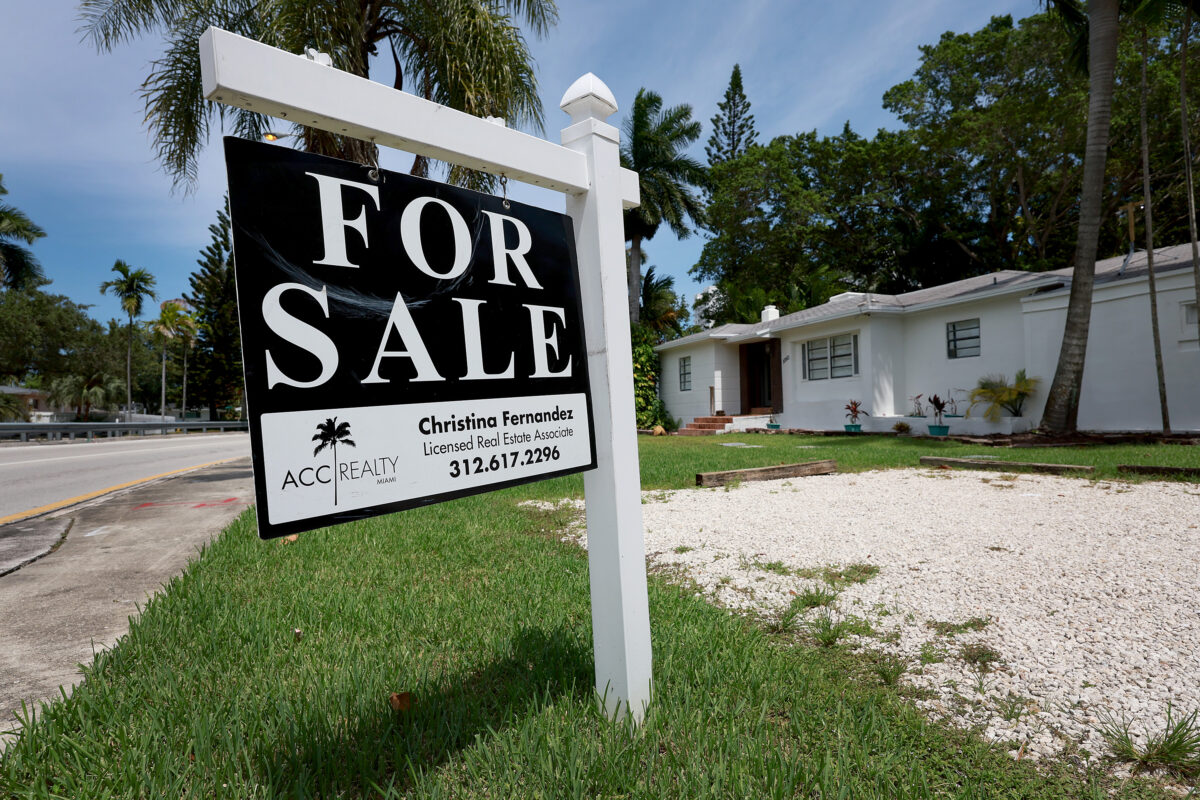


Mortgage applications plunged as the 30-year fixed mortgage rate inched higher toward 7 percent, a weekly industry survey discovered.
For the week ended Feb. 17, the seasonally adjusted Market Composite Index—a measurement of mortgage loan application volumes—declined 13.3 percent, down from the 7.7 percent drop in the previous week, according to the Mortgage Bankers Association (MBA). Mortgage applications fell 4 percent on an unadjusted basis.
The Purchase Index plummeted 18 percent, to a 25-year low, while the Refinance Index tumbled 2 percent. Both indexes were down 72 percent and 41 percent, respectively, from a year ago.
This comes as the average 30-year fixed mortgage rate increased 23 basis points, to 6.62 percent, the highest since the middle of November. This is up from 6.39 percent in the previous week, and represented the second consecutive weekly jump.
“This time of the year is typically when purchase activity ramps up. But over the past two weeks, rates have increased significantly as financial markets digest data on inflation cooling at a slower pace than expected,” said Joel Kan, MBA’s vice president and deputy chief economist. “The increase in mortgage rates has put many homebuyers back on the sidelines once again, especially first-time homebuyers who are most sensitive to affordability challenges and the impact of higher rates.”
The significant boost in the 30-year rate was attributed to the latest elevated monthly inflation readings and the better-than-expected labor and retail sales data. These numbers have forced investors to shift their expectations that the Federal Reserve will continue raising its policy federal funds rate through the summer, sending Treasury yields higher. As a result, the 10-year yield, which functions as a benchmark for mortgage rates, finished the Feb. 21st trading session above 3.95 percent.
Meanwhile, a growing chorus of market experts says that the U.S. real estate market could be showing signs of life again.
In addition to the upward trend in mortgage applications last month, the Census Bureau reported that new home sales rose 2.3 percent (pdf). Pending home sales also jumped 2.5 percent in December, according to the National Association of Realtors (NAR). But the NAR noted that existing home sales dropped for the twelfth straight month in January, sliding 0.7 percent.
For the second consecutive month, the National Association of Home Builders (NAHB) and Wells Fargo Housing Market Index increased to a six-month high of 42 in February. This was also the largest monthly gain in close to a decade. In addition, gauges of current sales conditions, sales expectations, and traffic of prospective buyers also edged higher.
“Even as the Federal Reserve continues to tighten monetary policy conditions, forecasts indicate that the housing market has passed peak mortgage rates for this cycle,” said NAHB chief economist Robert Dietz. “And while we expect ongoing volatility for mortgage rates and housing costs, the building market should be able to achieve stability in the coming months, followed by a rebound back to trend home construction levels later in 2023 and the beginning of 2024.”
This is a concerning trend, warned Neel Kashkari, president of the Federal Reserve Bank of Minneapolis, telling CNBC earlier this month that this “does make our jobs harder to bring the economy into balance.”
“All things being equal, that means we’d have to do more with our other tools,” he said.
The White House will release a plan on Wednesday to reduce mortgage insurance fees charged to first-time homebuyers.
Vice President Kamala Harris and Housing Secretary Marcia Fudge are scheduled to unveil the details to trim Federal Housing Administration (FHA) loan fees at an event in Bowie, Maryland. The proposal would help approximately 850,000 borrowers save roughly $800 per year on the cost of the typical loan.
“Today’s announcement is an important step in making homeownership more attainable. FHA-insured mortgages, which accounted for 7.5 percent of home sales in the third quarter of 2022, are targeted at homebuyers who otherwise may not be able to achieve homeownership. This cost-lowering measure will make buying a home more attainable and affordable for more low- and middle-income borrowers,” the White House said in a statement.
Although U.S. home prices have eased from the pandemic-era buying frenzy, housing affordability has continued to be an issue for millions of Americans trying to achieve the goal of homeownership.
In the fourth quarter, more than one-third (38.1 percent) of new and existing homes sold were affordable to families earning the national median income of $90,000, down from 42.2 percent in the previous quarter, the NAHB/Wells Fargo Housing Opportunity Index revealed. This was a record low.
“Rising mortgage rates, supply-chain disruptions, elevated construction costs, and a lack of skilled workers and lots all contributed to a declining housing market and worsening affordability conditions going back to the second quarter of last year,” said Alicia Huey, the NAHB chairwoman, in a statement.
Supplies have also plunged to near-all-time lows, sliding below one million units in December. As a result, the United States is projected to face a shortage of 3.8–5.0 million homes in the coming years.
Earlier this month, Sen. Sherrod Brown (D-Ohio) and Sen. Tim Scott (R-S.C.) of the Senate Committee Banking, Housing, and Urban Affairs held a hearing that looked at the housing industry’s “structural deficit.” Expert witnesses concluded that affordability is today’s “greatest challenge” facing the real estate market.
A recent survey found that 61 percent of Americans think homes are too expensive, and more than half (52 percent) believe the housing market will only become less affordable this year.
